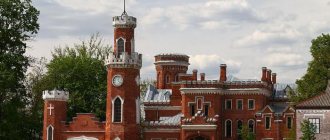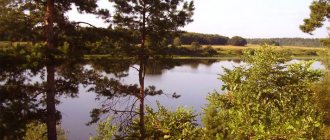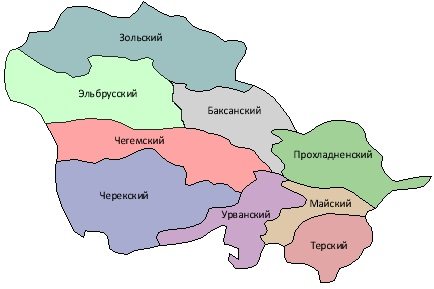The Omsk region is located in the southwestern part of Siberia. The development of this large region began in the 16th century, when the troops of Ataman Ermak came to the Siberian lands. Satellite maps of the Omsk region will help you get an idea of the location of the region, find its cities, roads and other objects. Using the online service you can find buildings, attractions, and train stations. It will prove to be an indispensable assistant when traveling and on a business trip.
The region neighbors Kazakhstan, as well as such Siberian regions as:
- Novosibirsk;
- Tomskaya;
- Tyumen
From north to south, the region is divided into 2 parts by the Irtysh River. On the map of the Omsk region with diagrams you can also find other rivers:
- Ishim;
- Tara;
- Osha;
- Om.
The southern regions are represented by steppe and forest-steppe landscapes, and in the north of the region there are vast swampy areas. The nature and wildlife of the region are unique. There are about 30 nature-protected areas in which wild animals, rare birds and fish live. In every corner of the region there are beautiful places, historical and architectural attractions, which can be found on a map of the Omsk region with districts.
Before you go to this region, research it using an online service. You can find out how to get to any locality by car - the map will indicate the desired route, which cities have rail connections and how to reach the region by air. In any area on the map of the Omsk region you can find interesting objects, monuments and nature reserves.
Story
Arose near the mouth of the river. Tara (the right tributary of the Irtysh River) as a fortress on the southern border of Russian possessions in Siberia; was the center of barter trade with Dzungaria and Central Asia. It burned down several times (in 1629, 1658). After the fire in 1669 it was moved downstream of the Irtysh, to its modern location. With the construction of the Omsk fortress, when the Siberian Highway passed south of Tara, it lost its strategic and commercial significance.
There is a branch of the Omsk State Pedagogical University in the city.
The city has preserved wooden houses with carved cornices and platbands. Decembrists were transported along the Tara tract in 1926, some of them served exile in Tara.
Map of the Omsk region with cities and villages
There are 6 cities and more than 1.5 thousand villages and settlements in the region. The capital of the region is the city of Omsk. This is a million-plus city and a large industrial, commercial, sports and cultural center of the Irtysh region. If you enlarge the map of the Omsk region with cities and villages, you can see all the streets with house numbers. A large number of ancient architectural buildings have been preserved in Omsk. There are also modern sports facilities, theaters and museums.
The second most populous and most interesting city in terms of history and region is Tara. This is the 1st city built in the region. Currently, it is a settlement with preserved wooden architecture, and previously it was inhabited by merchants and industrialists who developed the lands of the region, built plants and factories, and financed the construction of railways and roads.
Small towns in the region include:
- Tauride;
- Kalachinsk;
- Isilkul;
- Nazyvaevsk.
A large number of people live in rural settlements, which are presented on the map of the Omsk region with villages. In small settlements, crop and livestock farming is carried out, and eco-tourism is actively developing.
Tyukalinsk
Tyukalinsk , in the Omsk region, regional subordination, regional center, 134 km northwest of Omsk. Located in the east of the Ishim Plain, 79 km northeast of the Nazyvaevskaya railway station on the Ishim - Omsk line. Road junction. Population 12.4 thousand people (1992; 4.2 thousand in 1897; 4.2 thousand in 1926; 6.6 thousand in 1939; 10.2 thousand in 1959; 11.9 thousand in 1979) . In 1759, there was a postal station on the site of modern T. Since 1763 (when the Siberian Highway was laid south of Tara) - the Yamskaya settlement of Tyukal. There are several versions of the origin of the name: from the name of the river, past which the tract ran where “varnaki baled,” that is, they robbed, carts; from the surname of the first settler - blacksmith Ivan Tyukalov; from the Ugric or Turkic word “bale”, meaning goods packaged for transportation. The expanded settlement received the status of a district town of T in 1823. In 1838 it was retained by the state and annexed to the Omsk district. In 1878 - again a district city, later - a district city of the Tobolsk province. At the end of the 19th century. in T. there were about 700 residential buildings, there were 2 churches, a parish school and a two-class school. The inhabitants were engaged in agriculture and cattle breeding. At the fairs there was a lively trade in bread, meat, leather, furs, cattle, and horses. At the beginning of the 20th century. There were 27 factories and factories in Tbilisi, including butter factories. In 1903, an office was opened in T. for the export of butter abroad (to Germany, England, and Sweden). After the construction of the Trans-Siberian Railway, the Siberian Tract, and with it T., lost their trade importance. In modern T.: a large butter and cheese plant; consumer goods factory; production of reinforced concrete products. Museum of History and Local Lore. The city is built mainly with wooden one-story houses. A water pipeline with water intake from the Irtysh is being built (1993).
NAZYVAEVSK , a regional center in the Omsk region, 149 km northwest of Omsk. Located on the Ishim Plain. Railway station on the Omsk - Tyumen line. Highway junction (to Isilkul, Tyukalinsk, Krutinka). Population 14.4 thousand people (1992; 16.4 thousand in 1959; 14.2 thousand in 1979). In 1910, in connection with the construction of the railway, it emerged as a station village. It grew rapidly as a result of the influx of settlers; was built up mainly with wooden and adobe houses. The city has been around since 1956. Modern Nizhny Novgorod is the center of an agricultural region with industry aimed at processing local raw materials (a creamery, a meat plant with a feed mill, and a poultry plant with a hatchery shop). Railway and road transport enterprises. Tannery. Knitting factory. The city has blocks of 2- and 3-story brick and panel houses.
ISILKUL , in the Omsk region, regional subordination, district center, 145 km west of Omsk. Located on the Ishim Plain, in the Kamyshlovsky tract. Railway station on the Trans-Siberian Railway. Highway junction; The Omsk-Chelyabinsk highway runs 3 km north of Ilya. Population 26.3 thousand people (1992; 25.1 thousand in 1959; 25.7 thousand in 1979). In 1894 a small railway station appeared. The station village gradually grew due to the influx of settlers. It was built mainly with unbaked brick huts. There were also rich merchant wooden houses, shops, and storage sheds. Residents were engaged in agriculture or working on the railroad. Since 1945 - a city. In modern India: factories—brick and reinforced concrete products; factories - meat and butter factories; knitting factory, railway and road transport enterprises; elevator. Branch of the Research Institute of Oilseeds. Near I. is the Isilkul fruit nursery, founded in 1902 by the forester Zhukov (more than 40 varieties of apple trees, pears, cherries, and plums are grown).
General information about the Omsk region
Distinctive features . Although Russian merchants visited the lands of the Omsk region already in the 15th century, serious development of these territories began in 1584-1585, during the campaign of Ataman Ermak to the southern regions of Siberia. It was then that his troops reached the current borders of the Omsk region, the towns of Tebendy and Tashetkany, whose residents voluntarily recognized the power of Ermak, and not Khan Kuchum. Soon after the death of Ermak, the detachment of Prince Andrei Yeletsky founded the town of Tara, which became an outpost of the subsequent colonization of Siberia.
Tara Fortress
The city of Omsk, founded in 1716 to protect the south of Siberia from the Dzungarian state, became one of the most important administrative centers of Siberia. During the Civil War, it was the capital of White Russia - the state of Admiral Kolchak, elected Supreme Ruler of Russia. After the Reds' victory, Omsk's star sank. But when factories and research centers began to be moved here during the Great Patriotic War, Omsk became the largest scientific and industrial agglomeration in Siberia. The aerospace industry, mechanical engineering, and the development and production of electronic equipment are especially developed here.
Many wonderful, outstanding people were born or worked in the Omsk region. The poet Innokenty Annensky, the artist Mikhail Vrubel, the surgeon Leonid Poluektov, the actor Mikhail Ulyanov, and General Dmitry Karbyshev, who was brutally tortured by the Nazis, were born here. In 1850-1854, the great classicist Fyodor Dostoevsky served his sentence here at hard labor, and during the Great Patriotic War, famous designers Sergei Korolev and Andrei Tupolev worked here.
The nature of the Omsk region is beautiful and diverse. There are 29 specially protected natural areas here, including two federal reserves with a total area of 132 thousand hectares.
Nature of the Omsk north. Photo by Gerantich (https://fotki.yandex.ru/users/komp-anatolij/)
Geographical location . The Omsk region is located in the south of Western Siberia. In the south it borders with Kazakhstan, in the west and north - with the Tyumen region, in the east - with the Novosibirsk and Tomsk regions. It is part of the Siberian Federal District.
The entire territory of the region lies in the middle reaches of the Irtysh, which cuts it and divides it into right-bank and left-bank parts. On the right bank the Barabinskaya Lowland stands out. In its northern part there are swamps, in the southern part there are lakes and salt marshes. On the left bank, it is worth noting the Ishim Plain, which has a flat topography, with a maximum height of 140 m. Many lakes are located in the Kamyshlovsky Log valley, crossing it from west to east. On the right bank there is also a special form of relief - manes. These are flat elevations 5-6 meters high and 2-4 km long.
The population of the Omsk region is 1973985 people. Urban residents make up 72% of the total population. A large influx of people to the Omsk region began after the Great Patriotic War, when Omsk began to turn into a large scientific and industrial center.
Despite the economic crisis of the 90s, the population of the region has remained virtually unchanged for 20 years and fluctuates at the level of 2 million people. This is also facilitated by the positive value of natural population growth, equal to 1.1 people. per 1000 inhabitants.
Before the Russians settled the Omsk lands, many peoples lived here - Mongols, Dzungars, Kalmyks, Magyars, Mansi, Khanty, Kemaki, Teleuts, Shors, Uzbeks, Tajiks, Nogais, Turkmens. Now Russians make up 83.34% of the region's population. In second place are the Kazakhs (3.96%). Ukrainians are in third (2.62%).
St. Nicholas Monastery, village. Bolshekulache. Photo by Gerantich (https://fotki.yandex.ru/users/komp-anatolij/)
Crime. 47th place in the criminal ranking of regions of the Russian Federation is a pretty good indicator for a region located in Siberia. Crimes are committed here, but lately high-profile and scandalous crimes have been quite rare here. And so, there is crime, but mostly petty, everyday crime. In the first half of 2011, 8.22 crimes were committed here for every thousand residents.
The unemployment rate in the Omsk region is 6.86%. In 2001 it was much higher - about 10%, and this figure has been steadily decreasing every year. The level of income in the Omsk region is quite modest compared even to the neighboring Tomsk or Tyumen regions. Thus, in 2012, the average salary in the Omsk region was 21,712 rubles. But there are many industries where this figure is much higher, and even exceeds the 30 thousand rubles mark. For example, in the extraction of fuel and energy minerals - 47 thousand rubles, in the production of petroleum products and nuclear fuel - 53.8 thousand rubles, in the field of financial activities - 35 thousand rubles, in the field of public administration and security - 30 thousand rubles.
Property value. 1.3 million rubles is the minimum price level for one-room apartments in Omsk. But there are many more offers in the range of 1.8 - 2 million rubles. Two-room apartments are sold at prices from 2 to 3 million rubles, three-room apartments - from 2.5 million rubles. and higher.
The climate of the Omsk region is continental. There are several climate zones located here. In the north there is taiga, then there is forest-steppe, and in the south there are steppes. Winters here are harsh, and summers are dry and hot. In January the average temperature is −20°C, in July +18°C. But in winter, thirty-degree frosts are not uncommon, as in summer - thirty-degree heat. The northern regions have high humidity, and precipitation there is twice as much as in the south - 500 mm versus 250 mm per year.
Omsk. River station. Place where the Om flows into the Irtysh. Photo by Mikhail V. (https://fotki.yandex.ru/users/mixail-moiseenko2008rest/)
Economy and industry of the Omsk region
The economic component of the region is represented by several industries and agriculture. Enterprises of such industries as:
- military;
- chemical;
- aerospace;
- mechanical engineering;
- petrochemical
Enterprises that can be found on Yandex maps of the Omsk region produce a wide variety of goods:
- furniture;
- Food;
- beverages;
- Construction Materials;
- clothes;
- shoes.
Agriculture makes a large contribution to the regional budget. Potatoes, legumes, cereals, and fodder crops are grown in the region. Food industry enterprises produce semi-finished products and other goods from animal products. Cattle, poultry, and pigs are raised in the region.
Large retail facilities belonging to federal retail chains are concentrated in the Omsk region of the region. The service sector is also well developed. There are a large number of hotels, restaurants, and entertainment centers in the regional capital and other cities.










